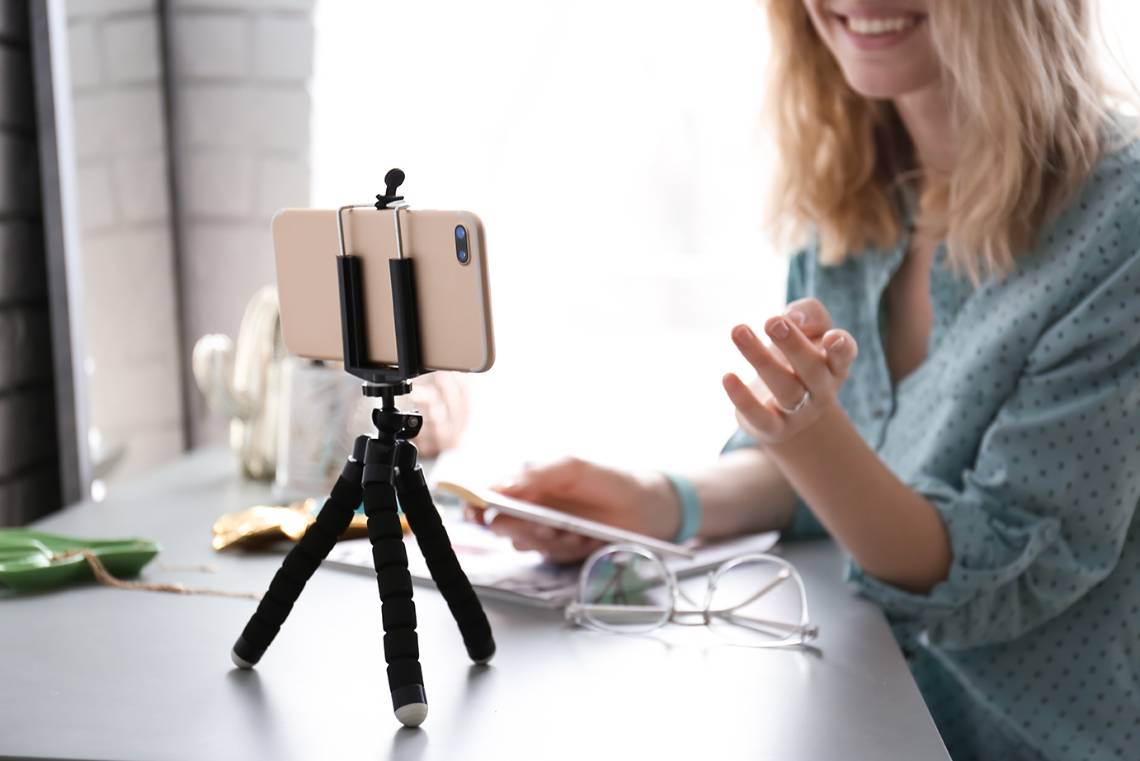Seven ways to improve your digital classroom setting without buying new equipment
The shift to digital course settings can lead to a variety of new and different communication challenges in teaching—both in terms of what we communicate, and how. Looking ahead to the fall semester, what is your level of confidence when it comes to setting your stage for teaching in a digital environment?
If you selected option 2, 3, or 4, we have good news—you don’t have to be a production specialist with fancy gear to make it work. The first step to enhancing your lectures and video class time is by controlling your environment and making the most of what you have on hand. While new technology can be an asset, it is often costly—or difficult to access. We have a few simple solutions to improve your setup that will put you and your content in the best light possible.
Check your camera angles.
You’re the authority in the room, and you should position yourself to reflect that. Start by turning on your camera to check the set up. Make sure you’re the focal point and the camera is at eye level.
 Stabilize your camera.
Stabilize your camera.
If you’re using a laptop, you can stack a few books under the device to raise it. For phone cameras, make sure to use a tripod (or something comparable) rather than holding it. Here are a few creative solutions if you don’t have a tripod and feel confident in your DIY skills.
Find your light.
This might be standard advice for actors, but the rest of us likely need a little help. Position yourself where your face can be illuminated by a light source, like in front of/near a window. Natural light is best, but if you need to use artificial light, remember: you want soft, even lighting. Don’t be afraid to grab a few lamps and play with positioning them behind your camera until you find the best solution for your space. If your lighting solutions are limited, this light is an inexpensive option we can vouch for.
Minimize distractions in your space.
You want to be sure students are focused on what you have to say rather than the things happening around you. This doesn’t mean you have a stark white wall behind you, just make sure your background isn’t so busy that your students stop paying attention and focus more on what’s behind you.
When recording lectures, look at your camera while you speak.
Maintaining eye contact with your virtual audience is just as important as it would be for an in-person class. Doing this helps stimulate for the viewer the sense that they are in the room with you. Ideally, you would be pre-recording lectures on your own time and sharing them prior to a live class session. Recording mini lectures lasting 5-15 minutes is smart, for multiple reasons. Shorter lectures not only help students focus on the info rather than their fatigue, it also helps you save time. If you don’t like the way the lecture goes during a take, you’ll only have to re-do a few minutes rather than a whole hour. Further, chunking ideas into mini lectures can help you build a cache of re-recorded material you can use for more than one class.
Control your sound.
Whether your kids are loudly enthusiastic in the background or your room has an inexplicable echo, miscellaneous background sounds can make or break a lecture’s success. If possible, close the door of your office/room. Try using earbuds with a built-in microphone, not only cutting down on that background sound for the audience but also helping your ability to focus without distractions. Note: If you are using earbuds, be mindful of any jewelry, clothing, etc. that could interfere with your microphone. And most importantly, speak at a conversational volume and pace to help keep your audience focused and the information clear.
 Practice, watch yourself, and get feedback.
Practice, watch yourself, and get feedback.
We’re all working in the same virtual space with similar challenges. Reach out to a colleague (or even your CxC rep) and set up a brief video chat where you can provide constructive feedback to each other about effectively teaching and communicating in digital spaces. This will allow you to ensure that what you think you’re communicating is consistent with how your audience sees and hears it.
Now that you’re a little more confident going into the Fall, help your students feel the same way! CxC has put together the following resources with students in mind to set them up for success—and help you establish expectations—in a digital environment:
- Etiquette Tips for Video Meetings
- The Basics of Filming Yourself
- Tips for Video Conferencing
- Tips for Effective Presentations in a Video Conference
Looking for more?
- Tips for faculty who are new to recording video
- 10 Tips for Creating Effective Instructional Videos
- 6 Tips for Creating Engaging Video Lectures That Students Will Actually Watch
- Understanding the difference between Zoom, Panoptco and Kaltura - and what they can do for you (tips from LSU Online)
Is there a teaching challenge you’re facing that CxC should address in an upcoming blog post? Reach out and let us know at cxc@lsu.edu!